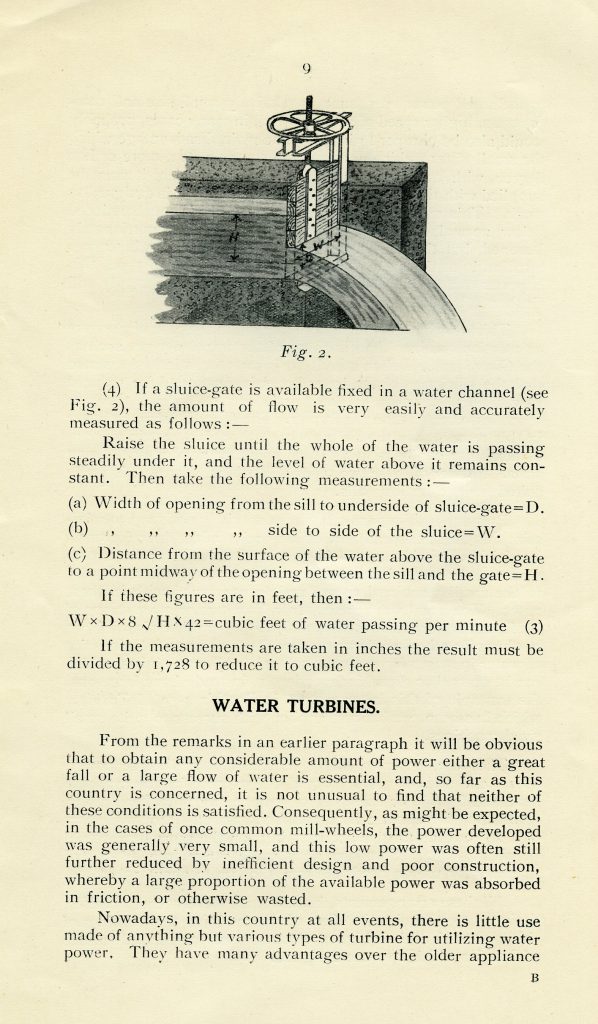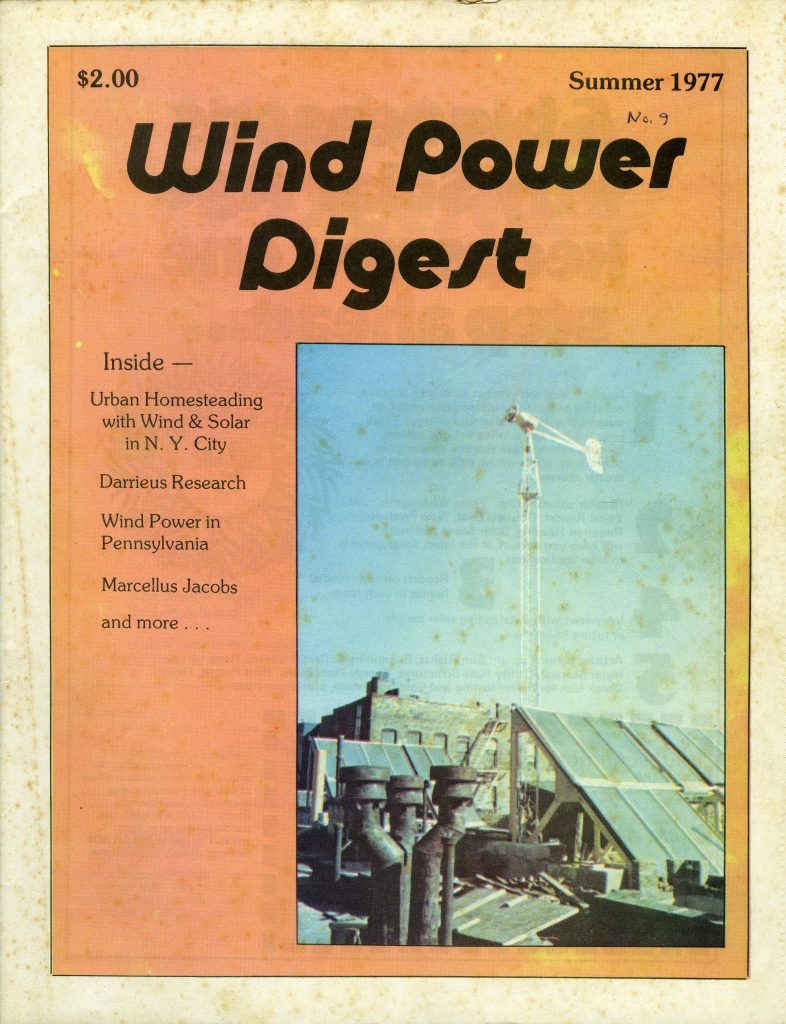Water Power (with 6 diagrams), Rural Industries Bureau, Leaflet no. 17, (Box F400)
The goal of pamphlet is to outline generally the opportunities that a local-water course might offer to the country worker. The preface claims that the pamphlet aims to discusses advantages and disadvantages for the benefit of the worker, rather than focus excessively on the practical set up and installation. To start with, the downfalls of the initial cost is talked through. Stating reasonably the potential cost of storing water for intermittent use, cost of transporting the water to the necessary place and its subject to the seasons do not make the best impressions. The next section of the pamphlet lists the different types of wheels and turbines and the technical steps needed to run such a machine. The latter part of the pamphlet examines the pitfalls of transmission of power and the inefficiency of the water turbine and water wheel. The concluding remark surmises that while the water wheel isn’t as efficient as the turbine (due to output and constant repairs), however, in the right conditions, may prove more efficient that a water turbine.
Musgrove, Peter, Wind Energy Evaluation for the European Communities (Commission of the European Communities, 1984)
Peter Musgrove’s evaluation on wind energy is a study to review contemporary research on wind power, and an assessment on the potential development of wind energy systems in Europe and other countries worldwide. Musgrove begins his report with a summary of the general characteristics of wind turbines, as well as a list of potential environmental and human impacts the turbines may have. Though not particularly in-depth, he does cover most of the major aspects of wind energy systems that could pose a potential issue (for instance, noise, and impacts to birds).
The vast majority of the report is spent discussing a range of European countries (and, on a lesser note, Canada, Japan and the United States), and their previous, and potential, involvement in wind energy developments.
Musgrove concludes his evaluation with his recommendations on how to proceed with the development of wind energy systems between 1983-1985.
Lee Johnson, in his article, “Wise-Wind – Designing for Jobs”, presents the argument that the existence of technology should be appropriate for our aims and goals. Technology should be created with the goals in mind, and not created to hinder them, particularly in regards to the future. Johnson defines ‘appropriate technology’, and explains how some technology has created new opportunities for growth, wealth, and employment, whilst others have hindered these.
The author argues that windmills can be considered appropriate technology, and are created to make clean energy attainable. He states that windmills, in comparison to non-renewable sources such as coal and nuclear power, do not create long-term health problems, do not require waste storage solutions, and do not require radiation decontamination or the evacuation of millions of people if they were to break down.
Johnson further states that they cost less than nuclear power, and are relatively inexpensive and straightforward to construct compared to large power stations. Finally, he concludes with an emphasis on the creation of more employment opportunities with the arrival of wind power projects, and how wind turbine manufacturing could be done locally, thus providing employment to the surrounding population.


